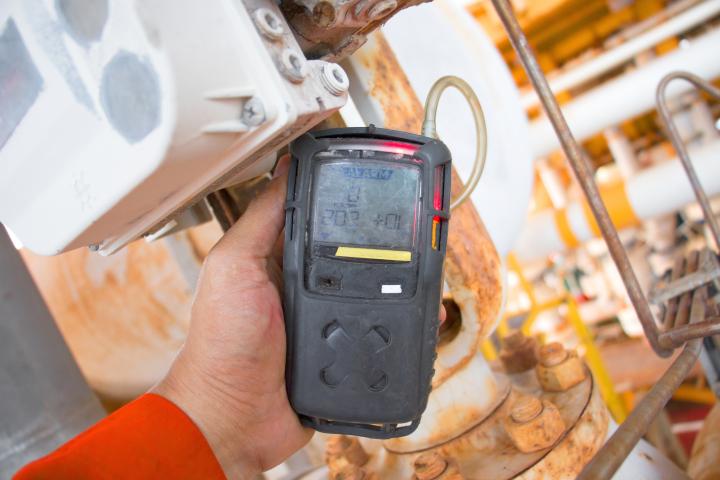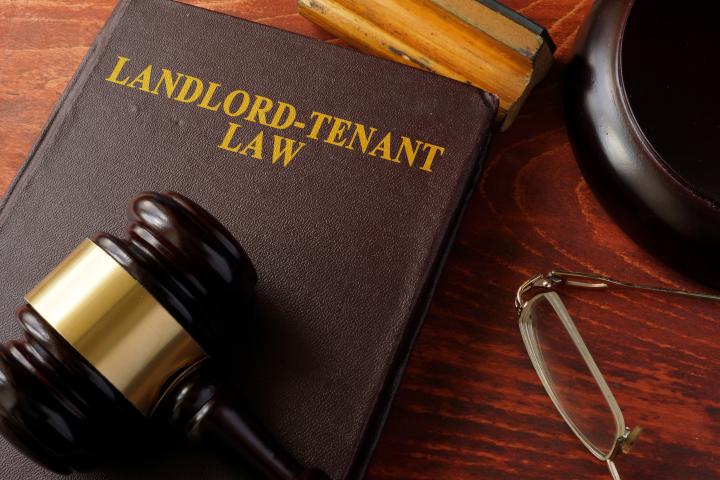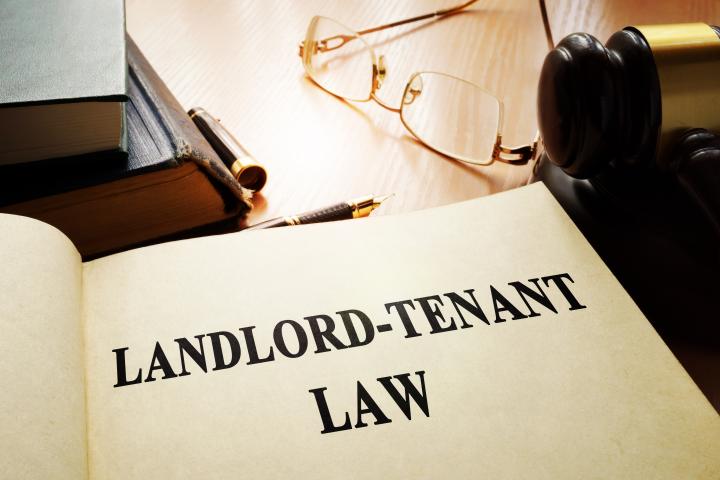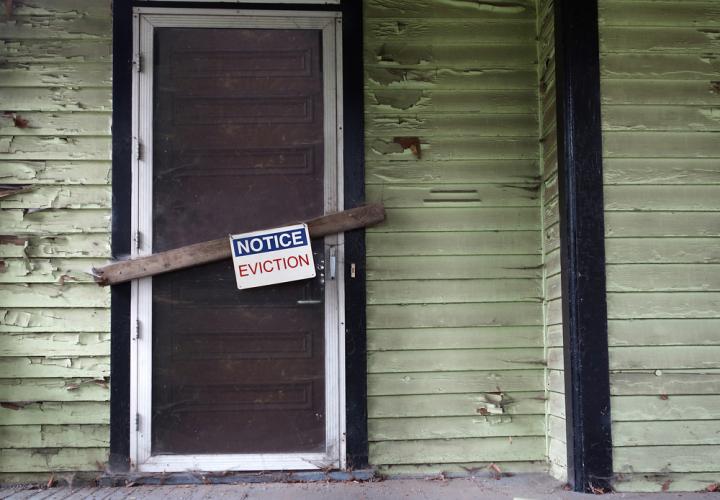Search by alphabetical topics All ABCDEFGHIJKLMNOPQRSTUVWXYZ
-
 Gas Safety Record
Gas Safety RecordUnder Section 36 of the Gas Safety Installation and Use regulations 1998, all landlords must and are legally required to carry out a gas safety check by a recognised registered gas safety engineer each year and this should include:
Repair and maintain gas pipework, flues and appliances in a safe condition.
Ensure an annual gas safety check on each appliance and flue.
Keep a record of each safety check.
After a full inspection, the gas safety engineer should provide the tenant with a copy of the gas safety record to comply with the regulations.
A copy of the Gas Safety Record must be given to both the tenant and the landlord at the start of the tenancy and within 28 days of the annual check. The landlord is also under obligation to keep his copy of the Gas Safety Record for 2 years.
A minimum Gas Safety Record check must contain:
A description of and the location of each appliance or flue checked.
The name, registration number and signature of the individual carrying out the check.
The date on which the appliance or flue was checked.
The address of the property at which the appliance or flue is installed.
The name and address of the landlord (or their agent where appropriate).
Any safety-related defect identified, and any remedial action taken.
Confirmation that the safety check has included an examination of the matters referred to in paragraphs (a) to (d) of: Regulation 26(9) of the Gas Safety (Installation and Use) Regulations 1998.
Section 36 of the Gas Safety installation and use regulation 1998 does not specify a specific type of form to be use by the engineer to record details for a Gas Safety Record inspection. They can use their own record providing that they list all information listed below. The form could have these additional lines:
The address of the premises at which the appliance or flue is installed.
The Gas Safety Record.
Any defect identified.
Any remedial action taken.
Confirmation that the checks undertaken comply with the requirements as stated below:
Where a person performs work on a gas appliance he shall immediately thereafter examine;
The effectiveness of any flue.
The supply of combustion air.
The operating pressure or heat input, or where necessary both.
The name and signature of the individual carrying out the check and the registration number with which that individual, or his employer, is registered with the Gas Safe Register.
-
 Harassment and Illegal Eviction
Harassment and Illegal Eviction- If a landlord ends, and attempts to take possession of a Rent Act Protected, Secure, Assured or Assured shorthold tenancy whilst not following the correct legal procedure and taking any action which could be described as harassment he/she will have committed a criminal offence under the Protection from Eviction Act 1977.
Illegal Actions are classed as followed:
- Unlawful entry to a tenant’s home without prior permission.
- Interference with a tenant’s properties utilities services.
- If a landlord prohibits entry to a tenant’s property by changing the locks, then this will be regarded as illegal eviction if the tenant feels sufficiently harassed into leaving the property.
A tenant will not be protected under the Protection from Eviction Act 1977 if:
- The tenant shares the property with the landlord or the landlord’s family.
- The tenancy was a holiday letting.
- The tenant was a former squatter.
- The tenancy is part a hostel.
- The tenancy was granted to provide accommodation under Part VI of the Immigration and Asylum Act 1999.
- If there is no protection from the Protection from Eviction Act 1977 then the landlord can recover possession upon the expiry of the Notice to Quit without obtaining a Court order.
-
 HAZARDS
HAZARDSHHSRS (Housing Health and Safety Rating system check)
Damp and mould growth: Exposure to house dust mites, damp mould, or fungal growth.
Excessive cold: Exposure to low temperatures.
Excessive heat: Exposure to high temperatures.
MMF: Exposure to chemicals used to treat timber and mould growth.
Asbestos: Exposure to hazardous building materials.
Carbon monoxide and fuel combustion products: exposure to:
· Carbon monoxide
· Nitrogen dioxide
· Sulphur dioxide and smoke.
Lead: The ingestion of lead.
Radiation: Exposure to radiation.
Exposure to fuel gas: such as manufactured fuel gas or natural gas and petroleum gas.
Volatile organic compounds: Exposure to volatile organic compounds.
Crowding and space: Lack of adequate space for living and sleeping.
Entry by intruders: Difficulties in keeping the dwelling or HMO secure against unauthorised entry.
Lighting: A lack of adequate lighting.
Noise: Exposure to noise.
Domestic hygiene, pests, and refuse:
· Poor design, layout, or construction such as that the dwelling or HMO cannot readily be kept clean.
· Exposure to pests
· An adequate provision for the hygienic storage and disposal of household waste.
Food safety: An adequate provision of facilities for the storage, preparation and cooking of food.
Personal hygiene, sanitation and drainage: An inadequate provision of:
· Facilities for maintaining good personal hygiene
· Sanitation and drainage.
Water supply: An adequate supply of water free from contamination, for drinking and other domestic purposes.
Falls associated with baths etc: Falls associated with toilets, baths, showers or other washing facilities.
Falling on stairs etc.: Falling on stairs, steps, or ramps where the change in level is 300 mm or more.
Failing between levels: Falling between levels were the difference in level is 300 mm or more.
Electrical Hazards: Exposure to electricity.
Fire: Exposure to uncontrolled fire and associated smoke.
· Flames, hot surfaces etc, contact with controlled fire or flames
· Hot objects, liquid, or vapours.
Collision and entrapment: Collision with or entrapment of body parts in, doors, windows, or other architectural features.
Explosions: An explosion at the property or HMO.
Position and operability of amenities: The position, location and operability of amenities, fittings, and equipment.
Structural collapse and falling elements: The collapse of the whole or part of the property or HMO.
Source of Information
Oxford Dictionary of Construction Surveying and Civil Engineering, Oxford University Press,2012
-
 Houses in Multiple Occupation (HMO)
Houses in Multiple Occupation (HMO)- The term Houses in Multiple Occupancy can be applied to an area where a tenant lives in shared accommodation.
- If this applies to the tenant’s property, the landlord will have to abide by and be subject to various statutory requirements and penalties.
- Section 77 and sections 254-259 of the Housing Act 2004 gives the legal definition of an HMO.
Licensing of HMO’s
- Details of the licenCing requirements for HMO’s in England are contained in the Licensing of Homes in Multiple Occupation Order 2006.
- Compulsory Licencing – Governed by Section 61 Housing Act 2004
- The following gives details of the properties that require compulsory licencing. These are:
- Three or more stories high.
- Occupied by five or more persons.
- Those persons form two or more separate households.
- Additional Licencing of HMOs – Governed by Section 56-60 Housing Act 2004
- Licencing over and above the aforementioned can be applied on a discretionary basis by Local Authorities.
- Selective Licencing of Other Residential Accommodation. – Governed by Section 79-80 Housing Act 2004
- A selective licencing scheme could be applied to HMO licenced property. This licencing could be used in areas of deprived housing and cover not just HMOs but all private rented accommodation.
Additional Criteria for Registration and Licencing
- The accommodation is acceptable for the number of people detailed under the licence.
- The person deemed to be the licence holder is fit and proper.
- The licence holder is the most appropriate person.
- Managerial and monetary functions are in place.
Requirements of an HMO
- To be fit for use an HMO must meet the following requirements:
- Correct food storage, preparation and cooking facilities are available.
- The occupants have exclusive use of enough WC’s.
- The occupants have exclusive use of enough basins, showers and baths with each having a working supply of hot and cold water.
- Fire alarms, fire escapes and other satisfactory fire systems are in place.
-
 Housing Benefit
Housing BenefitWhat is Housing Benefit?
Housing Benefit offers assistance towards paying all or part of the rent of tenants on low incomes or who are in receipt of benefits. Claims should be made at a local authorities’ offices on the appropriate benefit application form.
-
 Housing Cases
Housing CasesThe following types of housing dispute qualify for legal aid:
Possession Proceedings
Harassment and Illegal Eviction
Homelessness
Disrepair of the property that poses a serious risk of harm to the tenant and any family.
A legal aid solicitor can be found at the following link:
https://www.gov.uk/find-a-legal-adviser
Civil Legal Advice can be contacted for legal advice on debt, benefits, housing, education, employment of family problems:
Monday to Friday: 9am to 8pm and Saturday: 9am to 12.30pm
Telephone: 0845 345 4 345
Minicom: 0845 609 6677
A tenant can text “legalaid” and their name to 80010 to get a call back.
-
 Housing Health and Safety Rating System (HHSRS)
Housing Health and Safety Rating System (HHSRS)Housing Health and Safety Rating System (HHSRS); Management Regulations
Management Regulations and Inspections are required for both licenced and unlicensed HMOs in order for the property to be adequately managed as well as meeting the required safety standards.
The property manager is required to oversee:
The exterior and structural elements of the property.
The facilities that are interior to the property.
The Housing Health and Safety Rating System (HHSRS) – (Housing Act 2004) is a tool to evaluate risks and hazards to health and safety from any shortfalls found in properties.
The HHSRS is made up of 29 categories to assess if a property is rated as having Serious (Cat 1) or Other (Cat 2) hazards.
The categories are available in the Housing Health and Safety Rating System Operating Guidance –Annex D.
Guidelines can be found at: http://www.communities.gov.uk/documents/housing/pdf/142631.pdf
Management of HMO(England) Regulations 2006
Owners of managers of HMOs are subject to the following duties contained in these regulations:
Supply of water and drainage to be maintained.
Safety measures to be put in place by manager in regard to but not exclusive to fire, gas and electrical safety.
Tenants to receive information from manager.
Waste disposal facilities to be provided.
Electricity and supplies to be maintained.
Fittings, fixtures and appliances to be maintained.
Living accommodation to be fit for purpose.
Local authority to be kept up to date with occupancy details.
If a manager fails to maintain these standards, then the Local Authority has the power to impose fines of up to £5000 for individual breaches of regulations.
Occupiers also have a duty to ensure that the manager can comply with the regulations and follow reasonable instructions put in place by the manager.
The Management of Houses in Multiple Occupation (England) Regulations 2006 No. 372 are found at: www.legislation.gov.uk.
Within the first five years of granting an HMO a licence a local authority must ensure that there are no Part 1 functions that need to be exercised against the property for which the licence was granted.
The Part 1 functions are set out at Section5 Housing Act 2004.
Section 234 Housing Act 2004 provides details of the duties that a landlord/manager must comply with in respect to managing an HMO.
If the landlord/manager does not follow the statutory requirements of managing an HMO a tenant should advise the local authority so that investigative/remedial action can take place.
-
 Illegal eviction
Illegal evictionTenants – Action against harassment/Illegal eviction
Criminal Actions
The tenant should contact the Police if the landlord (or associates) has used verbal threats and/or physical violence towards him/her as part of harassment and/or illegal eviction. The tenant should also contact the Local Authority Tenancy Relations Officer (TRIO) who should ensure that private tenants are not illegally evicted or harassed and has the power to bring criminal proceedings against the landlord in the Magistrates Court which can impose a fine or up to 6 month’s imprisonment on any landlord found guilty of illegal eviction and/or harassment. If a case proceeds to the Crown Court, then the maximum sentence is an unlimited fine and a sentence of up to 2 years in prison.
Reinstatement in the property
The tenant will still be able to proceed with a claim against the landlord in the County Court even if they have been reinstated in the property under the following courses of action:
-
 Income Requirements
Income RequirementsHousing Benefit will cover all of the eligible rent (subject to benefit cap restrictions) if a tenant is in receipt of the following:
Income based Jobseeker’s Allowance
Income related Employment and Support Allowance
The Guarantee Credit element of Pension Credit
-
 Ineligibility for Housing Benefit
Ineligibility for Housing BenefitThe following scenarios will preclude a tenant from claiming Housing Benefit:
- If the tenant is living with a close relative including step relatives and their partners and paying rent. In this case the only way Housing Benefit maybe claimed is that if the Local Authority (after an investigation) can conclude that the tenancy has not been set up with the sole aim of fraudulently claiming benefit.
- As an aid to help pay the costs of a home loan or mortgage.
- If the claimant is a full time student with no disability or children.
- If the claimant is an asylum seeker.
- Any claimant under 35 will only be eligible for housing benefit at the single room rate unless they are a care leaver under 22 or those aged between 25 and 35 in homeless hostels.
- The claimant does not have a right to reside (including those from within the European Union not exercising treaty rights) or are subject to immigration control.
Search by alphabetical topics
All
ABCDEFGHIJKLMNOPQRSTUVWXYZ




